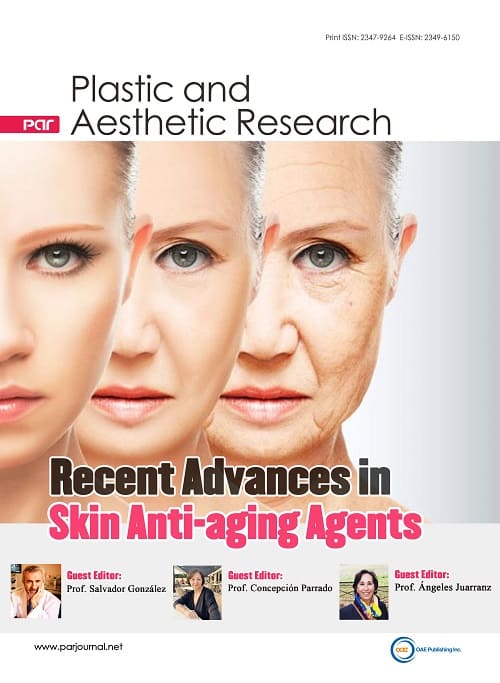
Topic: Recent Advances in Skin Anti-aging Agents
A Special Issue of Plastic and Aesthetic Research
ISSN 2349-6150 (Online) 2347-9264 (Print)
Submission deadline: 30 Jun 2021
Guest Editor(s)
Prof. Salvador González
Department of Medicine and Medical Specialties, Alcalá University, Madrid, Spain.
Prof. Concepción Parrado
Department of Histology and Pathology, Faculty of Medicine, University of Malaga, Málaga, Spain.
Special Issue Introduction
Skin is the main defensive barrier of our body and protects us from physical, chemical and biological factors of environment. The cutaneous barrier also provides homeostatic balance maintenance. The external factors (lifestyle, occupation, pollutants, and light exposure), combined with internal factors, are responsible for cutaneous aging, which affect healthy skin and increase the risk of cancer. Skin aging is externally characterized by the appearance of wrinkles, loss of elasticity, spots or loss of skin tone, among others. The aging process produces oxidative stress, inflammatory responses, a decrease of immune functions and the disruption of the skin barrier. Several cell stressors, such as mitochondrial dysfunction, telomere shortening, activation of oncogenes or changes in chromatin structure, are implicated in intrinsic and extrinsic skin aging. Oxidative stress plays a crucial role in both intrinsic and extrinsic aging: in skin, oxygen is converted into reactive oxygen species (ROS) by intrinsic processes; and ROS are the primary effectors of UV-caused photoaging... More recently, research has been focused on the assessment of injury that environmental factors cause to the skin. Besides sun radiation exposure, environmental factors involved in skin belong to the following major categories: air pollution (outdoor and indoor air pollution), tobacco smoke, among others. At the same time, the components of environmental stress can interact with ultraviolet radiation (photo pollution). Three major mechanisms seem to be related to the adverse effects of ambient air pollutants on skin health: the generation of free radicals, the induction of an inflammatory cascade, and the impairment of the skin barrier.
It is of critical importance to have a the deeper knowledge of all the factors (internal and external) involved in skin aging to develop new anti-aging therapies that can keep the skin undamaged over time and improve its ability to repair.
It is of critical importance to have a the deeper knowledge of all the factors (internal and external) involved in skin aging to develop new anti-aging therapies that can keep the skin undamaged over time and improve its ability to repair.
Keywords
Skin, skin aging, external factors, internal factors, oxidative stress, inflammatory responses, immune functions, skin barrier, environmental factors, mechanisms, anti-aging therapies
Submission Deadline
30 Jun 2021
Submission Information
For Author Instructions, please refer to https://www.oaepublish.com/par/author_instructions
For Online Submission, please login at https://oaemesas.com/login?JournalId=par&SpecialIssueId=384
Submission Deadline: 30 Jun 2021
Contacts: Celine, Assistant Editor, Celine@parjournal.net





